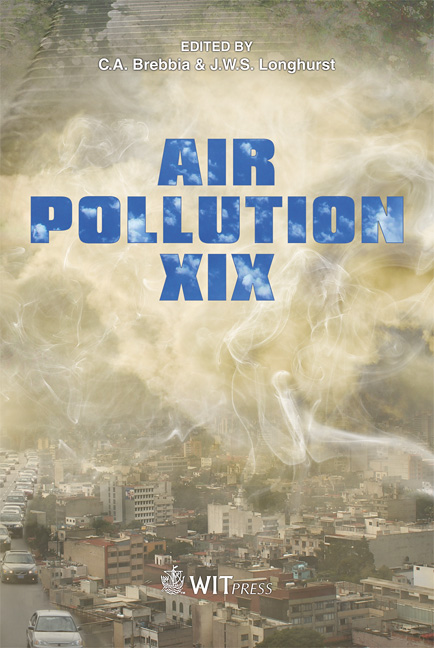Non-parametric Nature Of Ground-level Ozone And Its Dependence On Nitrogen Oxides (NOx): A View Point Of Vehicular Emissions
Price
Free (open access)
Transaction
Volume
147
Pages
12
Page Range
93 - 104
Published
2011
Size
382 kb
Paper DOI
10.2495/AIR110091
Copyright
WIT Press
Author(s)
S. Munir, H. Chen & K. Ropkins
Abstract
Ground-level ozone has been studied extensively using classic parametric statistics (most commonly conventional linear regression). Very few researchers have considered ozone distributions and even those that do tend to apply parametric techniques. This study assesses ground-level ozone distributions at six locations in the UK and characterises the correlation of nitrogen oxides (NOx) and ozone at a roadside location. The distribution of ozone is investigated, applying Shapiro-Wilk test and graphical presentations. The histograms are right skewed and show maximum frequency at ozone mixing ratios from 0 to 5 ppb (particularly at urban centers and roadsides locations), which is probably caused by high levels of freshly produced NOx associated with road traffic. There is evidence that ground level ozone is not normally distributed (p-values < 0.05). NOx is a dominant sink for ozone at urban and roadside sites due to its ozone scavenging effects. Consistent with literature ozone is negatively correlated with NOx. The negative correlation is stronger at low NOx levels (up to approximately 80 ppb 24 hour mean, Spearman correlation coefficient R is ‘-0.72’) and becomes weaker as NOx levels increase (over 80 ppb R value is ‘-0.53’). When NOx mixing ratios reach approximately 200 ppb or over the correlations become positive. This study investigates how the associations of ozone and NOx vary at different levels of their mixing ratios and suggests that due to the non-normal distribution of ozone, nonparametric statistics should be applied for ozone modelling. Keywords: ground-level ozone, air pollution, nitrogen oxides, nitrogen oxides and ozone, ozone distribution, vehicular emissions and ozone.
Keywords
ground-level ozone, air pollution, nitrogen oxides, nitrogen oxides and ozone, ozone distribution, vehicular emissions and ozone





